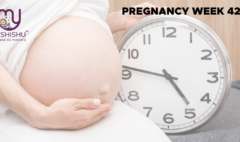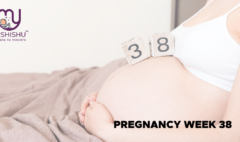Blighted Ovum in Pregnancy: A Reliable Guide
Blighted Ovum in Pregnancy: A Reliable Guide
Introduction
Welcome to a guide on the topic of Blighted ovum in pregnancy. As you embark on the journey of pregnancy, filled with hopes and dreams for the future, it’s essential to equip yourself with knowledge about the various aspects of this miraculous journey. One such aspect that may cause concern and uncertainty is the possibility of experiencing a blighted ovum in pregnancy.
Understanding blighted ovum in pregnancy and its implications is crucial for expectant mothers. It empowers you to navigate through any challenges with confidence and resilience. In this blog, we’ll delve into what blighted ovum in pregnancy is, its causes, symptoms, diagnosis, and management. Our goal is to provide you with the information you need to make informed decisions and seek the support you deserve.
Facing the possibility of a blighted ovum in pregnancy may feel overwhelming, but it’s important to remember that you’re not alone. Many women have walked this path before you, and there is a community of support and understanding waiting to embrace you. Let’s embark on this journey together, armed with knowledge and compassion, as we navigate the complexities of pregnancy and find strength in solidarity.
Table of Contents
What is Blighted Ovum in Pregnancy?
Blighted ovum in pregnancy, medically known as anembryonic gestation, is a type of early pregnancy loss characterized by the absence of an embryo or fetus despite the development of a gestational sac. In simpler terms, it occurs when a fertilized egg implants itself into the uterus, leading to the formation of a gestational sac, but the embryo doesn’t develop as it should. This can be a disheartening experience for expectant mothers, as they may initially be excited about their pregnancy but later discover that the embryo has not formed or has stopped growing.
While the gestational sac continues to grow, without an embryo, it cannot progress into a viable pregnancy. This condition typically becomes apparent during an ultrasound examination, where the absence of a fetal heartbeat or an underdeveloped embryo is observed within the gestational sac. Despite the lack of embryo development, hormonal changes may still occur, causing pregnancy symptoms such as nausea, breast tenderness, and fatigue, which can add to the confusion and emotional distress experienced by women facing a blighted ovum in pregnancy.
Causes of Blighted Ovum
The precise cause of blighted ovum isn’t always clear, but it’s often attributed to chromosomal abnormalities or irregularities in the fertilized egg. Some contributing factors and potential causes of blighted ovum include:
- Chromosomal Abnormalities: Errors in the genetic material of the fertilized egg can prevent the embryo from developing normally. These abnormalities may arise from the egg, the sperm, or during the process of fertilization.
- Hormonal Imbalances: Fluctuations in hormone levels, particularly those essential for early pregnancy, can disrupt the development of the embryo. Hormonal imbalances may be influenced by factors such as thyroid disorders or polycystic ovary syndrome (PCOS).
- Maternal Age: Advanced maternal age is associated with a higher risk of chromosomal abnormalities in the eggs, which can increase the likelihood of blighted ovum in pregnancy.
- Uterine Abnormalities: Structural abnormalities or irregularities in the uterus can affect implantation or interfere with the development of the embryo.
- Environmental Factors: Exposures to certain environmental toxins, medications, or substances during early pregnancy may pose a risk to embryonic development and increase the likelihood of blighted ovum in pregnancy.
- Maternal Health Conditions: Preexisting medical conditions such as diabetes, hypertension, or autoimmune disorders can impact the health of the pregnancy and contribute to the development of blighted ovum in pregnancy.
- Lifestyle Factors: Certain lifestyle habits, including smoking, excessive alcohol consumption, and illicit drug use, can negatively affect fertility and increase the risk of pregnancy complications, including blighted ovum in pregnancy.
It’s important to note that many cases of blighted ovum in pregnancy occur sporadically and are not directly linked to any specific cause. Additionally, while some risk factors may increase the likelihood of experiencing blighted ovum in pregnancy, not all women with these risk factors will develop the condition.
Symptoms of Blighted Ovum
Symptoms of blighted ovum can vary from woman to woman and may differ in severity. Some women may experience no noticeable symptoms of blighted ovum, while others may exhibit signs that prompt them to seek medical attention. Common symptoms of blighted ovum include:
- Vaginal Bleeding: Light to heavy vaginal bleeding, similar to a menstrual period, is a common symptom of blighted ovum in pregnancy. This bleeding may be accompanied by the passing of clots or tissue.
- Cramping: Some women may experience mild to moderate abdominal cramping or discomfort, which can be similar to menstrual cramps.
- Absence of Pregnancy Symptoms: In some cases, women with a blighted ovum in pregnancy may notice a sudden disappearance of typical pregnancy symptoms, such as breast tenderness, nausea, or frequent urination.
- Empty Gestational Sac: During routine ultrasound examinations, healthcare providers may observe an empty gestational sac, which indicates that no embryo has formed despite the presence of a gestational sac.
- Declining hCG Levels: Human chorionic gonadotropin (hCG) is a hormone produced during early pregnancy. In cases of blighted ovum, hCG levels may rise initially but fail to double as expected or may decline over time.
- Lack of Fetal Heartbeat: During ultrasound examinations, healthcare providers may not detect a fetal heartbeat, despite the gestational sac being visible.
It’s important to remember that these symptoms of blighted ovum can also occur in viable pregnancies or other pregnancy complications. Therefore, if you experience any concerning symptoms or have any questions or uncertainties about your pregnancy, it’s essential to consult your healthcare provider for evaluation and guidance.

Diagnosis and Confirmation of Blighted Ovum
Diagnosing and confirmation of blighted ovum typically involves a combination of medical history, physical examinations, and diagnostic tests. Here’s a detailed explanation of the diagnostic process of blighted ovum in pregnancy:
- Medical History and Physical Examination: Your healthcare provider will begin by discussing your medical history, including any previous pregnancies, miscarriages, or reproductive health issues. They will also conduct a physical examination to assess your overall health and may perform a pelvic exam to check for any signs of vaginal bleeding or abnormality.
- Ultrasound Examination: The primary diagnostic tool for confirming a blighted ovum in pregnancy is an ultrasound scan. During an ultrasound examination, a transducer device is placed on your abdomen or inserted into your vagina to create images of your uterus and pelvic organs. In the case of a blighted ovum in pregnancy, the ultrasound may reveal an empty gestational sac without a visible embryo or fetal pole. The absence of an embryo or fetal heartbeat in the gestational sac supports the diagnosis of a blighted ovum in pregnancy.
- Serial Ultrasound Scans: In some cases, your healthcare provider may recommend multiple ultrasound scans over several weeks to monitor the development of the gestational sac and confirm the absence of embryo growth or fetal heartbeat. Serial ultrasound scans can help provide a more accurate diagnosis and rule out the possibility of delayed embryo development.
- Blood Tests: In addition to ultrasound scans, your healthcare provider may also perform blood tests to measure the levels of certain hormones, such as human chorionic gonadotropin (hCG). In a normal pregnancy, hCG levels typically rise rapidly in the early weeks of gestation. However, in the case of a blighted ovum in pregnancy, hCG levels may not increase as expected or may decline over time. Serial hCG measurements can provide additional information to support the diagnosis of a blighted ovum.
- Genetic Testing (Optional): In some cases, genetic testing may be recommended, especially if there is a history of recurrent pregnancy loss or if other underlying factors are suspected. Genetic testing can help identify any chromosomal abnormalities or genetic factors that may have contributed to the blighted ovum.
Once a blighted ovum is diagnosed and confirmed, your healthcare provider will discuss treatment options and provide guidance on the next steps, which may include expectant management, medication, or surgical intervention, depending on your individual circumstances and preferences. It’s essential to communicate openly with your healthcare provider and ask any questions you may have to ensure you receive the appropriate care and support throughout the process.
Management and Treatment of Blighted Ovum
Managing and treating a blighted ovum depends on several factors, including the gestational age, individual health considerations, and personal preferences. Here are the common management and treatment options:
- Expectant Management: In many cases, healthcare providers may recommend expectant management, also known as watchful waiting. This approach involves allowing the body to naturally miscarry the pregnancy without medical intervention. During expectant management, your healthcare provider will monitor your condition through regular follow-up appointments and ultrasound scans to ensure the blighted ovum resolves spontaneously.
- Medication: In some situations, medication may be prescribed to help induce miscarriage and facilitate the expulsion of the uterine contents. Medications such as misoprostol, a prostaglandin analog, can be used to stimulate uterine contractions and promote the passage of tissue. Your healthcare provider will provide instructions on how to take the medication and may schedule follow-up appointments to monitor your progress.
- Surgical Intervention: If expectant management or medication is not effective or if there are complications, surgical intervention may be necessary to remove the remaining pregnancy tissue from the uterus. The two primary surgical procedures used for this purpose are dilation and curettage (D&C) and vacuum aspiration. During a D&C, the cervix is dilated, and the uterine lining is gently scraped to remove the pregnancy tissue. Vacuum aspiration, also known as suction curettage, involves using suction to remove the contents of the uterus. These procedures are typically performed under local or general anesthesia in a hospital or outpatient surgical center.
- Emotional Support: Coping with a blighted ovum can be emotionally challenging for many women and their partners. It’s essential to seek emotional support from loved ones, friends, or support groups who can provide understanding, empathy, and encouragement during this difficult time. Counseling or therapy may also be beneficial for processing feelings of grief, loss, and disappointment associated with the blighted ovum.
- Future Pregnancy Planning: After experiencing a blighted ovum, it’s natural to have concerns and uncertainties about future pregnancies. Your healthcare provider can offer guidance on when it’s safe to try conceiving again and may recommend preconception counseling to discuss any underlying factors or medical conditions that could affect future pregnancies. Taking proactive steps to optimize your health and well-being before attempting to conceive can help increase the likelihood of a successful pregnancy in the future.
Regardless of the chosen management approach, it’s essential to maintain open communication with your healthcare provider and follow their recommendations closely. They can provide personalized guidance and support to help you navigate the physical and emotional aspects of managing a blighted ovum and facilitate your journey toward healing and recovery.
Emotional Support and Coping Strategies
Experiencing a blighted ovum can evoke a range of intense emotions, including sadness, grief, disappointment, and even guilt. Coping with these feelings can be challenging, but there are several emotional support and coping strategies that can help individuals navigate this difficult time:
- Express Your Feelings: Allow yourself to express your emotions openly and honestly. Whether you feel like crying, talking, journaling, or engaging in creative activities like art or music, find healthy outlets for processing your feelings and expressing yourself authentically.
- Consider Counseling or Therapy: If you’re struggling to cope with the emotional impact of a blighted ovum, consider seeking professional counseling or therapy. A trained therapist can provide a safe and supportive space to explore your feelings, develop coping strategies, and work through grief and loss in a healthy way.
- Be Patient with Your Healing: Healing from the emotional impact of a blighted ovum is a gradual process, and it’s okay to have good days and bad days. Give yourself permission to grieve and heal in your own time, and trust that with time and support, you will find your way toward acceptance and peace.
Additional Common Questions
-
Is a blighted ovum the same as a miscarriage?
While a blighted ovum is a type of miscarriage, it differs from other types of miscarriages in that the gestational sac develops without an embryo. In other types of miscarriages, the embryo may develop initially but then stop growing or fail to develop properly.
-
Can a blighted ovum be prevented?
In most cases, blighted ovum cannot be prevented, as it often occurs due to chromosomal abnormalities or other factors beyond a person’s control. However, maintaining overall good health before and during pregnancy may help support a healthy pregnancy.
-
Is a blighted ovum a sign of infertility?
Experiencing a blighted ovum does not necessarily mean that you are infertile. Many individuals who have had a blighted ovum go on to have successful pregnancies in the future. However, if you have concerns about your fertility, it’s essential to discuss them with your healthcare provider.
-
What are the chances of having a blighted ovum in subsequent pregnancies?
While the risk of having a blighted ovum in subsequent pregnancies is slightly higher than in first pregnancies, it is still relatively low. Most individuals who have had a blighted ovum go on to have successful pregnancies in the future.
-
What is the treatment for a blighted ovum?
The treatment for a blighted ovum may vary depending on individual circumstances and preferences. In some cases, a healthcare provider may recommend waiting for the body to miscarry naturally, while in others, they may recommend medication or surgical intervention to remove the remaining tissue.
Conclusion
In conclusion, experiencing a blighted ovum can be a challenging and emotional experience for anyone hoping to start or expand their family. While it may be disheartening to learn of a blighted ovum diagnosis, it’s essential to remember that you are not alone, and there are resources and support available to help you through this difficult time.
If you have been diagnosed with a blighted ovum, it’s crucial to work closely with your healthcare provider to understand your options and make decisions that are right for you. Remember to take care of yourself both physically and emotionally, and don’t hesitate to reach out to loved ones or support groups for additional support.
While a blighted ovum can be a setback on your journey to parenthood, it’s important to remain hopeful and stay focused on the future. Many individuals who experience a blighted ovum go on to have successful pregnancies in the future, and there are often many avenues available to explore when you are ready to try again.
Above all, be kind to yourself during this time and allow yourself to grieve if needed. Remember that your worth as a person and a parent is not defined by this experience, and there is hope for the future. Stay informed, stay connected, and know that brighter days may be ahead.

want to know more
Explore Our Courses











